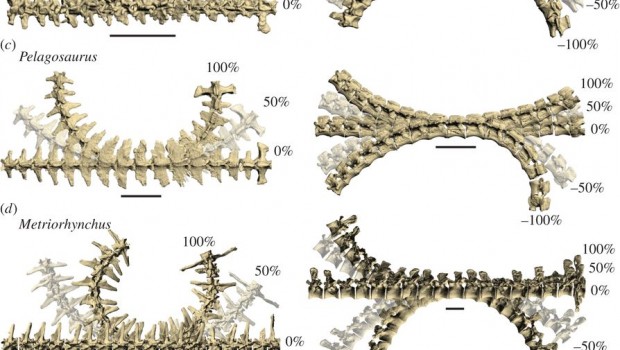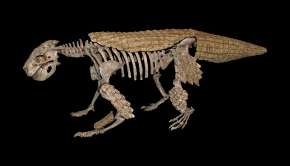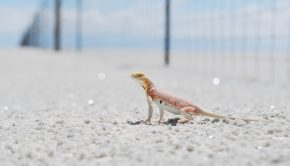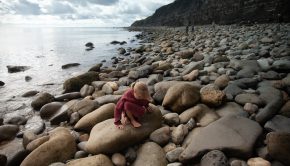Aquatic adaptations in crocodylomorphs
Crocodylomorphs today are not thought to be the most diverse group, consisting of all semi-aquatic forms of alligators, crocodiles, and gharials. However, the fossil record shows us that this group has a very long and diverse evolutionary history, with many groups making their way into the water. A new study lead by Dr. Julia Molnar of Howard University College of Medicine (Washington, DC) and the Royal Veterinary College (UK) has looked at how the vertebral column changed in this group to move into a more aquatic environment.
Dr. Molnar wrote this about the study: “Modern crocodiles, alligators, and gharials belong to a group called Crocodylomorpha which dates back to the early Triassic period. Although modern members are semi-aquatic, fossil crocodylomorphs occupied a wide range of habitats and used many different types of locomotion, including the small fast-running “sphenosuchians” and giant seagoing thalattosuchians. To investigate how the shape and function of the backbone has changed as crocodylomorphs became specialized for different types of locomotion, we used micro-CT scans and morphometrics to estimate maximum osteological range of motion and joint stiffness of vertebrae. Surprisingly, we found that range of motion was not very different between highly terrestrial and more aquatic crocodylomorphs. The most likely explanation (suggested by crocodylomorph experts Steven Salisbury and Eberhard Frey and supported by our tests on Nile crocodile cadavers) is that the arrangement of bony scales restricted the mobility of their trunks to different degrees. The effect would have been greater in more terrestrial early crocodylomorphs which had rigid, interlocking scales on their backs, as opposed to the more aquatic ones which had a looser arrangement of scales or none at all. We also found that the backbone of the most highly specialized swimmer in our study, a large streamlined animal with flippers and a fish-like tail, was probably the stiffest. The same result has been reported for fossil whales, plesiosaurs, and ichthyosaurs, suggesting that a stiff backbone evolved convergently in these groups as an adaptation for fast swimming. Because the evolution of the backbone in crocodylomorphs parallels that in mammals in some ways but also involved some unique adaptations, this group provides a valuable perspective on the evolution of vertebrate locomotion.”
This study is interesting because it shows that sometimes animals with vastly different locomotory modes sometimes have portions of the skeleton that do not necessarily reflect this, and not all of the skeleton will change substantially from its ancestral mode. Additionally, different bones evolve at different rates or adapt under other pressures. In this case, the vertebral column doesn’t change substantially because the osteoderms (bones embedded in the skin) affect the mobility of the animal. Furthermore, it supports this previous idea that osteoderms are important in the mobility and even related to locomotion in crocodylmorphs. They also found that in modern Crocodylus, different elements were responsible for providing stiffness depending on which way the animal was bending, providing further evidence that we have to remember to look at the entire animal and not single elements when looking at questions like locomotion.
For further information about this paper, check out Dr. Molnar’s guest blog at What’s in John’s Freezer. The paper was published open access in the journal Royal Society Open Science.
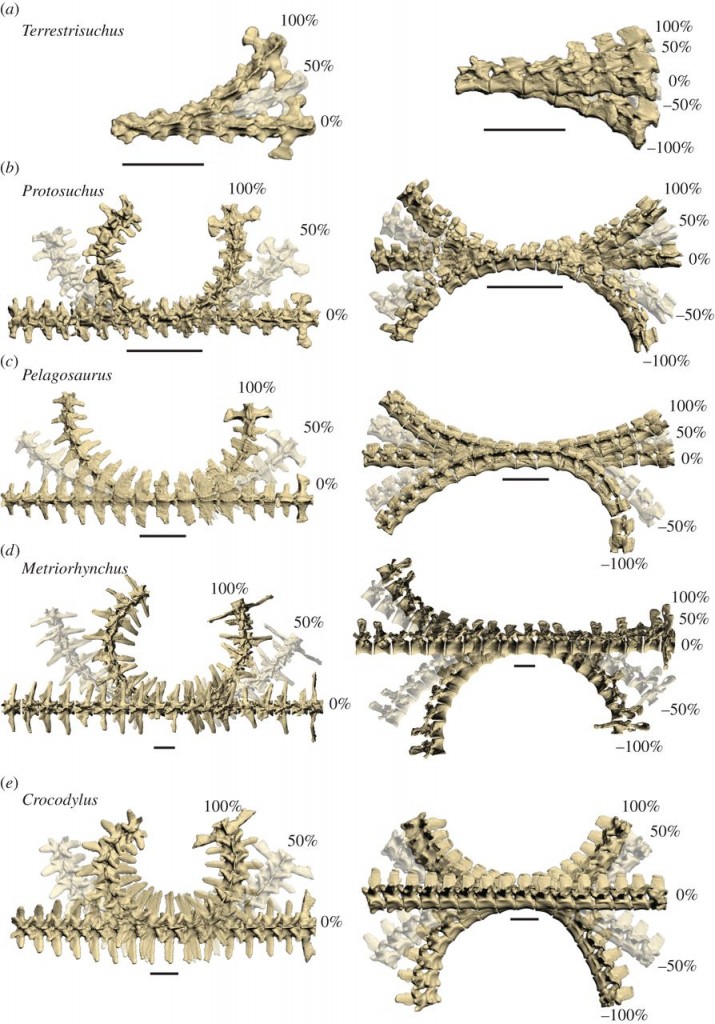
Osteological RoM (range of motion) estimates extrapolated to the entire backbone. Terrestrisuchus and Protosuchus are (more terrestrial) early crocodylomorphs, Pelagosaurus and Metriorhynchus are (more aquatic) thalattosuchians, and Crocodylus is a modern Nile crocodile. In the left column are dorsal views showing lateral flexion, and in the right column are lateral views showing dorsoventral flexion. Cranial is to the left. The RoM of each joint is equal to that of the nearest joint that we tested (three joints per taxon except Terrestrisuchus, with two). Percentages are relative to maximum osteological RoM. Scale bar, 5 cm. (Molnar et al. 2015)

